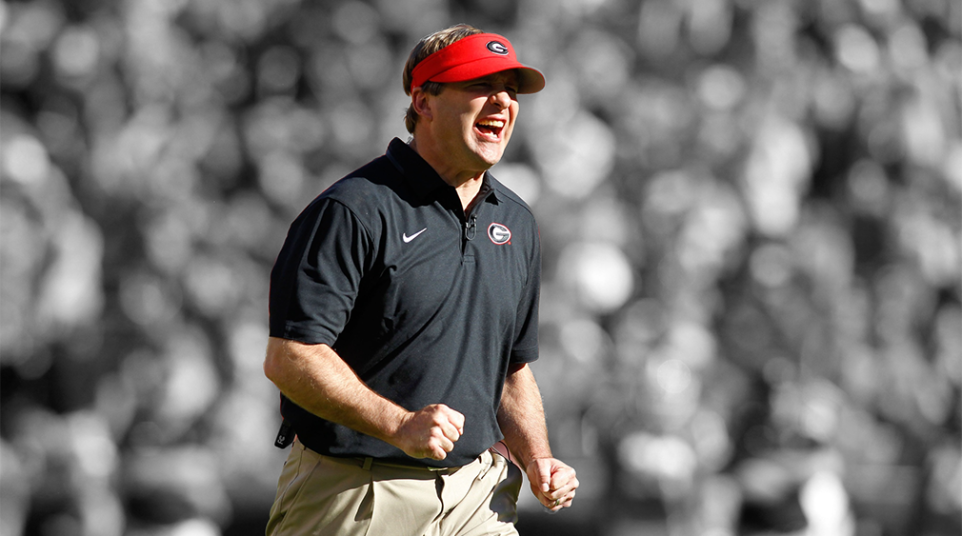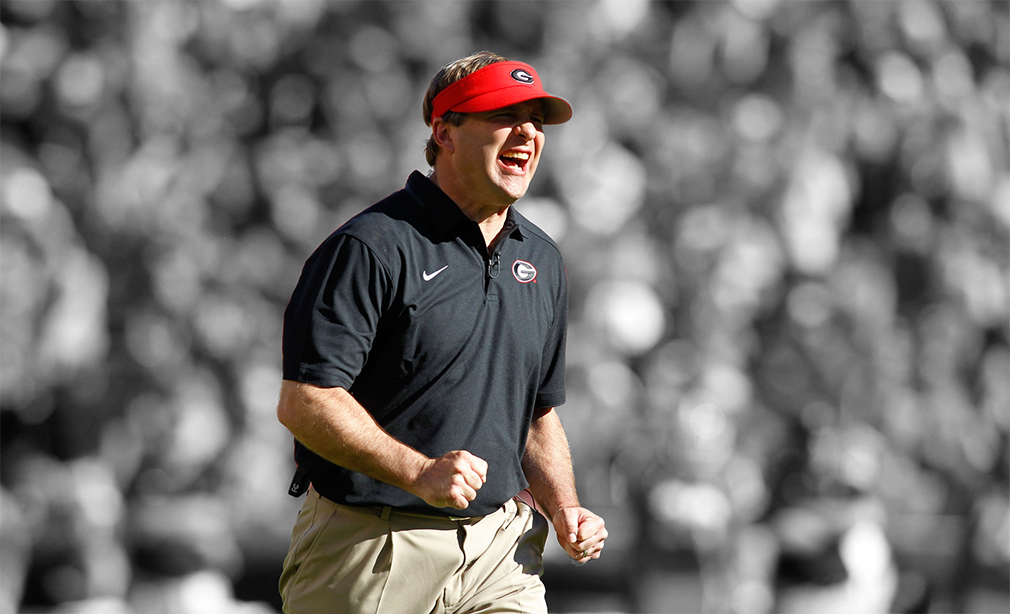Film study: How long will it take Kirby Smart to implement his defense at Georgia?
If you can’t beat them, join them.
That seems to be the collective attitude of SEC East powerhouses as they look to overcome the dominance of Alabama and Nick Saban out West. Not one, not two, but three programs have handed the reigns over to former Saban assistants in a bid to replicate the dominance of the Crimson Tide.
First, Florida picked up Saban’s former offensive coordinator Jim McElwain – by way of Colorado State. Next, South Carolina replaced their legendary coach with another former Saban assistant, Will Muschamp. But perhaps the most impactful hire from the Saban coaching tree was Kirby Smart at Georgia.
Smart, Saban’s longest serving assistant, has followed Saban like the pied-piper; from LSU, to the NFL’s Miami Dolphins and then to Alabama. Smart is, well, smart. He is universally respected throughout the profession as a teacher, educator and hands-on coach. As a long time assistant coach told me last week: “Being with Nick that long should tell you everything. How many guys get picked off or moved on? But Smart was still there, running things on Nick’s side of the ball. He was clever, and waited for a big job rather than jumping at the first one.”
Smart arrives at Georgia following in the footsteps of Mark Richt, a man run out of town for having the unmitigated gall of winning just nine games a year. He steps into a program littered with talent and his major challenge will be implementing the Tide’s off-the-field program and implementing his intricate defensive scheme in time to make a run at an SEC title in his first year on the job.
***
In the mid-90s Saban, then defensive coordinator of the Cleveland Browns, had a major problem: He could not stop the Pittsburgh Steelers.
Saban and his head coach Bill Belichick were two guys cut from the same cloth; they loved coaching defense, fixing problems and shutting down the sport’s most prolific attacks. The pair ran their Browns defense out of a base cover-3 look (three deep defensive backs), which was incredibly effective for the time. Then along came the big bad Pittsburgh Steelers, who began to run more spread looks, with multiple wide receiver sets and attacking the Browns’ cover-3 defense with four receivers all running streak or go routes — “Four Verticals.”
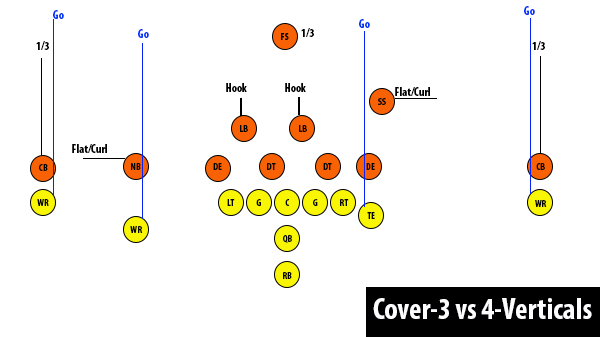
Four receivers deep, to three defensive backs deep meant the Browns couldn’t compete. Pittsburgh shredded them again and again attacking the weakest part of the defense — the seams — and causing Saban an untold number of headaches. The NFL was yet to become a spread based league, but this one team, using spread concepts, knew how to attack his near impenetrable defense. Saban couldn’t commit more defensive backs to the problem, as that would make Cleveland too light in the box and Pittsburgh would run all over them (they needed an eight-man front).
One obvious answer was to switch to man-to-man defense when the Steelers showed spread sets. The issue with man-to-man coverage is that it becomes a horse race; have inferior horses and you lose, traditionally giving up a big play.
Saban attempted to build in more man-to-man looks, playing a variety of cover-1 defenses. But they were ineffective. Saban calls cover-1 defense “cat” coverage; you’ve got your cat, and you’ve got your cat. “Cat” coverage only works if your five cats are good enough to stop their five-eligible cats.
“We got to where we couldn’t run cover-1 . So now we can’t play an 8-man front. The 1994 Browns went 13–5 , we lost to Steelers 3 times, lost 5 games total (twice in the regular season, once in the playoffs). We gave up the fifth fewest points in the history of the NFL, and lost to Steelers because we could not play 8-man fronts to stop the run” Saban told a high school coaching clinic in 2010.
Two of the best minds in all of football history — Saban and Belichick — had to find a way to stop Pittsburgh’s passing attack, while being flexible enough to stop the run — remember, they used to do that thing back then — the result was a hybrid defense that would morph on the fly, post-snap, depending on what the offense was running.
***
I’ve often described modern offensive football running along the same evolutionary line as the NBA. The spread-option offense has crossover principles to the fun and gun pace and space style we see throughout basketball. As the two sports’ offenses have begun to mirror each other, so too have the best way to defend them. The NBA employs a variety of matchup zones, and football defenses have implemented pattern-match coverages; a hybrid form of zone and man defense.
What is a ‘pattern-match’ defensive call?
There are three forms of defense; man-to-man, zone, and pattern-matching. Pattern-match coverages are a hybrid form of man and zone coverages with defenders dropping to a zone but switching to man-to-man coverage if receivers run a specific route.
Defenders are responsible for their zone, like any traditional zone defense, but they remain close to the receivers who enter those zones. Depending upon the route run by a receiver and the structural weakness of a particular zone defense, the defender will transition into man-to-man coverage.
For example, let’s say the defensive call is a three-deep zone. The boundary cornerback has a 1/3 of the field and in a traditional cover-3 call, would backpedal to his spot and cover that third.
In a pattern-match defensive call, the defender will instead be asked to read the receiver in front of him. If the receiver breaks inside out of his stance on a quick in-breaking route, the corner will backpedal like normal to his deep zone. However, if the receiver runs a deep pass pattern, the cornerback will mirror him down the field toward his zone, and convert into man-to-man coverage if the receiver runs a vertical, post or deep route.
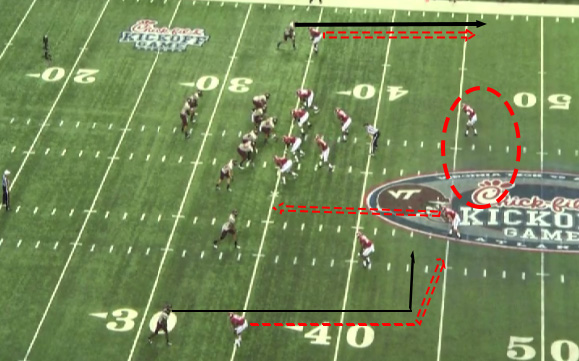
Detail-oriented coaches like Belichick, Saban and Smart will coach their defensive backs to recognize the most common route combinations of each opponent by the formation of the offense, the stance of the receiver and his release.
This makes the defenders’ decision-making process much quicker, be it pre-snap or immediately following the receivers release.
They will traditionally spend the game week going over the 12-15 most common offensive looks and the concepts run out of each alignment. It puts a high deal of pressure on the coaching staff in terms of tape study, teaching and putting faith in players to execute a complex defense in which a misread by one player destroys the defense’s structural integrity.
Like his time in Cleveland, Saban likes to run pattern-match coverages mostly out of middle safety looks, allowing him to rotate an additional safety into the box who can make the side more stout against the run or re-route a player looking to take advantage of the seams on concepts like “four verticals.”
Keys to making it work
Smart must have special players at cornerback, in the linebacking corps and particularly at safety, where you need an elite athlete, a sky-high football IQ, and the ability to make plays once they’ve made the correct decision and arrived at the right spot. One breakdown or bad read can destroy the defense’s structural integrity.
The safety here is crucial. If he drops into the box pre-snap it not only gives the offense a chance to alter its play call, but it also make it more difficult for that safety to take away a threat to the seam. If the safety jams a receiver/tight end at 2-3 yards, that receiver still has time to get on top of him and attack the seam, if he’s effective at getting of the jam. But if the receiver is re-routed at a depth between 8-10 yards, as the safety rotates toward the box, the seam is effectively cut off.
In an era of Air-Raid, Fun-and-Gun, and Spread-to-Run offenses, the hybrid nature of pattern-match coverages allow defenses to claw some of the advantage back.
It’s hard to argue with the results. Saban continues to roll to national titles, Belichick to Super Bowl crowns, and sides like Michigan State and the Carolina Panthers — enthused with their doctrines — to conference championships.
It can take time to implement and to get the right sort of players who have the IQ to recognize pre-snap/post-snap reads and make the right call down after down. With the right players – like all schemes – pattern-matching is the most effective way to stay solid upfront against the run, while being able to defend against spread formations in the passing game.
***
Smart largely called two forms of pattern-match coverages while coordinator under Saban at Alabama; “Rip” and “Liz” standing for right and left, the side in which the safety rotates into the curl/flat zone on a their cover-3 pattern-match call.
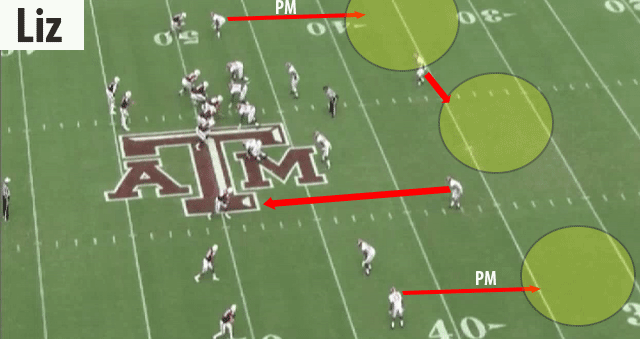
Rotating a safety to the strong side of the offensive formation allows the defense to keep the eight men in the box that Saban craves, while offering both zone and man looks/benefits on the back end. Run a vertical route and the defender will track you down the field; tun a slant and the defensive back drops back to his zone.
One of the key components of this kind of defense is personnel, not just from a talent standpoint, but from a skill-set one. To play this kind of hybrid man/zone defense that consistently blitzes and is looking to be aggressive on all fronts, you have to have special players at cornerback, in the linebacking corps and particularly at safety, where you need an elite athlete, a sky-high football IQ, and the ability to make plays once they’ve made the correct decision and arrived at the right spot.
While at Alabama, Smart has had the privilege of coaching some of the SEC’s top safety talent. Guys who can drop into the box, or play in space, depending on the Rip/Liz rotation; Ha Ha Clinton-Dix, Landon Collins and Mark Barron are just three examples of players with a special skill-set who were good enough to not be a liability in space, but excel when they rotated down into the box in order to form an eight-man front.
Finding that kind of talent on a consistent basis is really difficult, and it’s helped immensely by one of the best runs of inside linebackers in college football history: Rolando McClain, Dont’a Hightower, CJ Mosley and Reggie Ragland, and not to mention all kinds of talent along the the defensive line.
***
Smart’s biggest concern/challenge at Georgia
Alabama recruited for this system and recruited better than everybody. Georgia has talent, but the system requires a scheme-specific IQ. Finding that player — and beating Alabama to sign him — might require several recruiting cycles.
So how long will it take Smart to incorporate pattern-match coverages to Georgia, and when will the Rip/Liz play calls be sounding out around Sanford Stadium?
Well here Smart has some advantage. Fellow Saban protege Jeremy Pruitt had been the Bulldogs’ defensive coordinator prior to Smart’s arrival — Pruitt returned to Alabama to take over Smart’s old job. However, despite installing a much similar pattern-match philosophy in a year-long stint with Florida State, Pruitt ran more split safety looks at Georgia than Smart and Saban ran at Alabama.
Even against a triple-option team like Georgia Tech, which has a built-in numerical advantage in the box, Pruitt did not rotate his safeties in order to better defend the run.
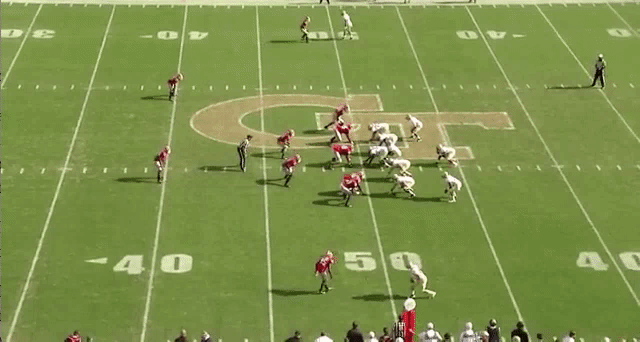
So while there may be an easy transition with most verbiage and the overall philosophy, on-the-field, the styles were different.
With that said, it’s not often that a coach walking out of Alabama walks into another locker room with a similar caliber of talent. At Georgia, Smart will certainly have the kind of athletes needed to implement vanilla forms of pattern-match coverages from day one.
Other X’s and O’s Features
- Why Tennessee’s Smashmouth Spread attack is so effective
- Why Jacob Eason is perfect fit for Georgia’s offense
- Inside Noel Mazzone’s N-Zone attack
- Film study: How Alabama unleashed the beast in Tim Williams
- Film study: What the SEC can learn from defensive guru Derek Mason
- Film study: As QB Brandon Harris goes, so too will the Tigers
But I’d suggest it will take longer for the specific Rip/Liz calls and other rotations (Alabama runs a hybrid cover-7 variant in obvious passing down situations) until the entire staff and squad are up to speed with the mentally taxing system.Smart will go to work recruiting a particular kind of player, with a popping football IQ to match their popping muscles. Smarts, instincts and athleticism are the keys to running the hybrid defense, and while there’s no denying the athletic talent on Georgia’s roster, it will be interesting to see how quickly they can come to terms with the week-to-week intricacies of Smart’s defense or whether it will require multiple recruiting cycles for Smart to replicate that which he ran so successfully at Alabama.
With that said, there’s plenty of enough talent right now at Georgia to run more basic looks and to challenge for an SEC crown immediately.
However, if Smart has learned anything from all his years with Saban, he will build toward the best defensive philosophy employed anywhere across the nation. Saban has proven that you can build a winner, while building toward defensive perfection.
Georgia is hoping that Smart can replicate that success and I wouldn’t doubt him.
